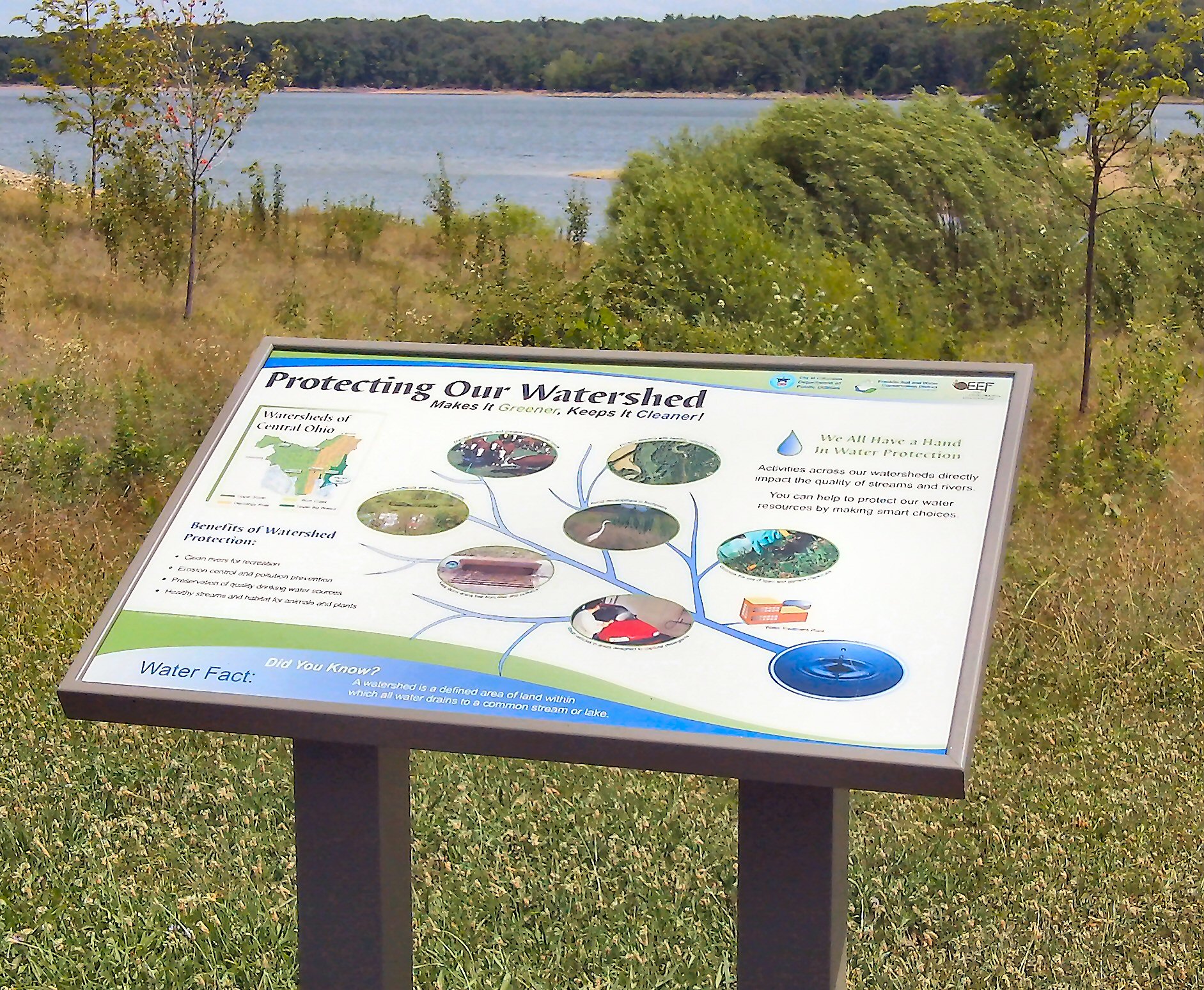Signage at Reservoirs
 Take a self-guided tour along the shoreline of Griggs, O'Shaughnessy & Hoover Reservoirs to learn about the green infrastructure on site.
Take a self-guided tour along the shoreline of Griggs, O'Shaughnessy & Hoover Reservoirs to learn about the green infrastructure on site.
Park visitors will see a variety of methods used to capture and treat stormwater flowing from nearby neighborhoods and roadways. Examples of rain gardens, pervious (porous) pavement, shoreline stabilization and more can be seen and will inspire residents to consider similar projects for their own home.
A healthy, plentiful water supply and quality drinking water begins by protecting water at its source. Green infrastructure offers promising solutions to help remove contaminants from storm water before it reaches our water supply. It is designed to capture surface water runoff. Once detained, pollutants can settle out and filter through pervious surfaces and plants can absorb excess nutrients.
When our lanscapes allow stormwater to slow down and soak into the ground, many pollutants will filter out naturally. In addition, by slowing the flow and volume of stormwater, we can reduce stream bank damage, sedimentation and erosion. The result is cleaner water entering our rivers, streams and reservoirs and a more healthy environment for everyone.